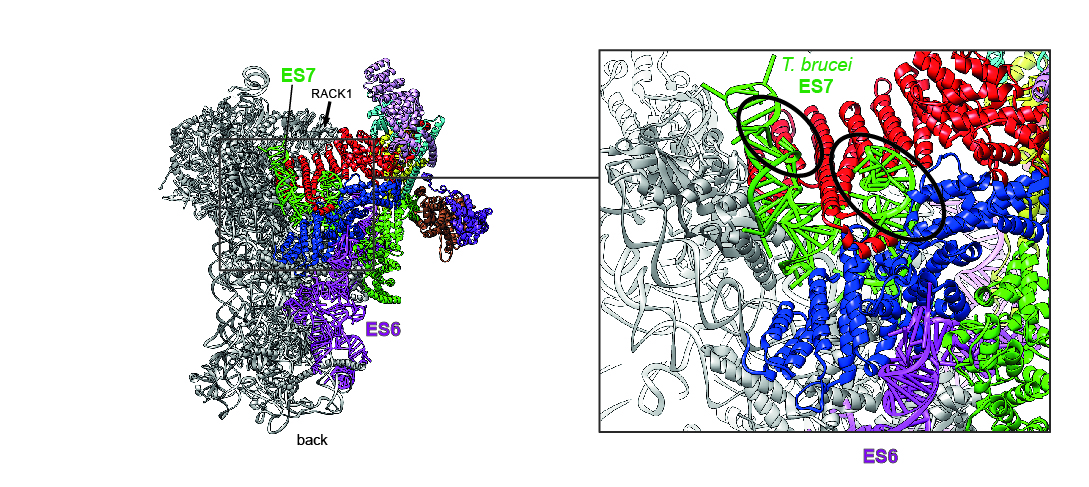African sleeping sickness and Chagas disease are neglected diseases affecting human and cattle, respectively, caused by kinetoplastid parasites Trypanosoma brucei and cruzi. There is an urgent need of discovery of novel, more effective and safe drugs against these parasites. We chose to target ribosome translation machinery, as it is essential for the parasite survival. Although the conservation of the ribosome structure among most of the studied eukaryotic organisms is high, recent works demonstrated the presence of kinetoplastid-specific ribosomal features, absent in the host counterpart (such as large rRNA expansion segments (ESs) and an additional kinetoplastid-specific ribosomal protein (KSRP)).
Our work on the cryo-EM structure of mammalian ribosomal preinitiation complex support the hypothesis that translation initiation complexes in kinetoplastids could be unique in that their ribosomes present an additional large binding surface to eukaryotic initiation factor 3 (eIF3). Therefore, its disruption could inhibit the protein translation in the parasitic pathogen without hindering translation in the host cells. We focus on functional and structural characterization of these kinetoplastid-specific features that could serve as potential drug target sites. To achieve that, we corroborate the functional studies in the parasite with structural investigation of isolated and purified complexes. The various ribosomal complexes will be then characterized structurally in order to identify the differences between them and their mammalian counterparts. Such deep structural knowledge could lead to the identification of several potential targetable binding sites that are specific only to the parasite.

eIF3 compatibility with Kinetoplastidian 40S. The visual experiment of docking mammalian eIF3 on the 40S from Trypanosoma brucei shows that either eIF3 or the T. brucei 40S ESs will have to undergo substantial conformational changes before they could interact without any steric clashes (highlighted by thick ovals). Hashem et al. Nature 2013a, des Georges et al. Nature 2015. The role of these large ESs in the binding of eIF3 will have to be investigated.